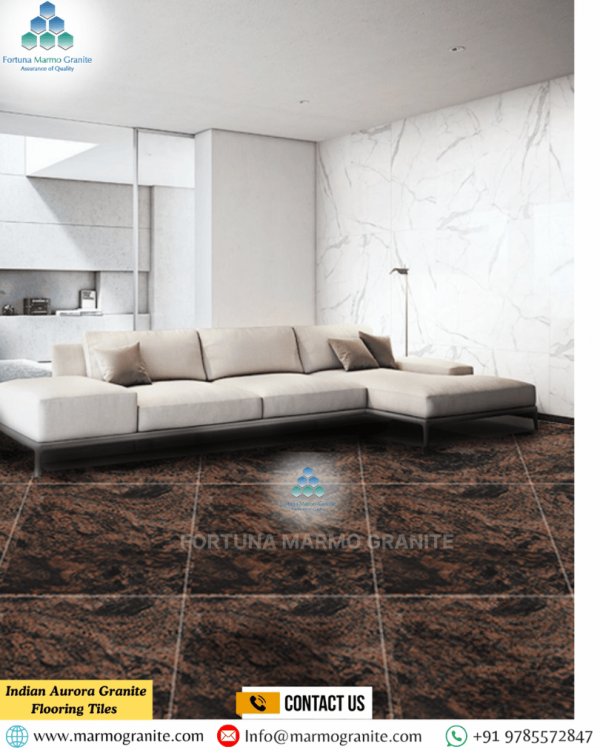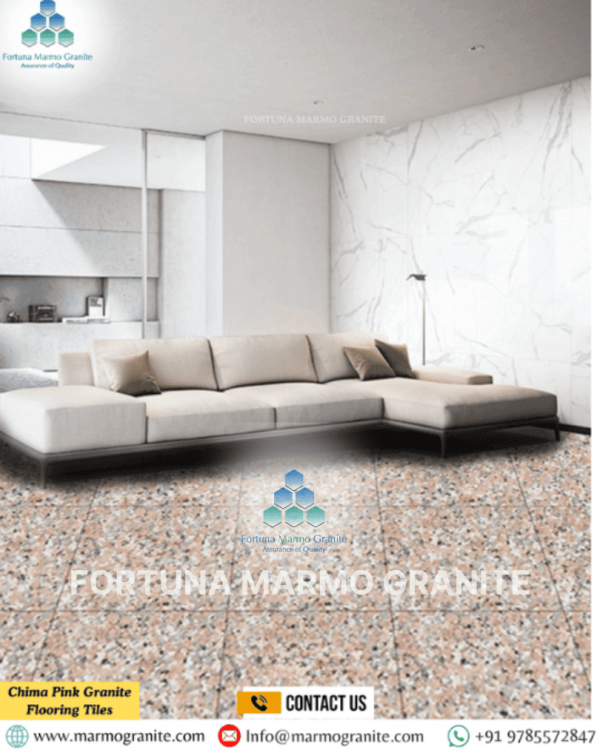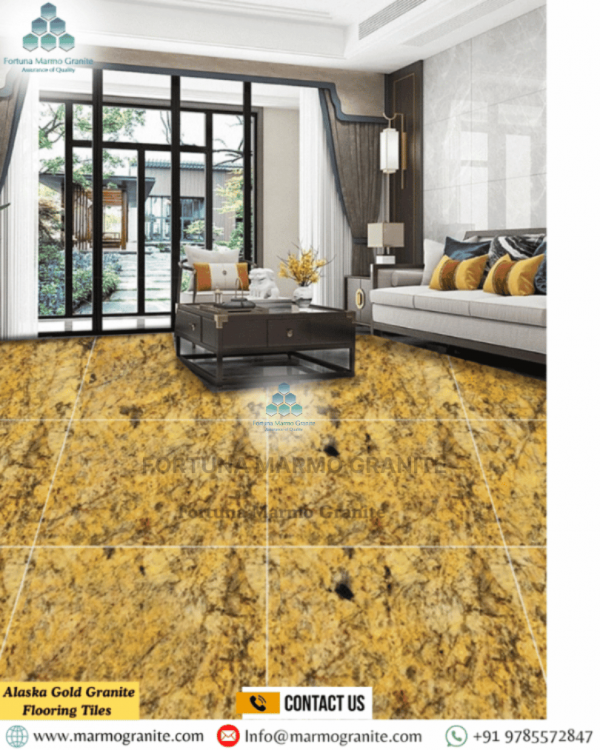The Complete Guide to Granite Flooring: Installation, Care, and Design Tips
The Complete Guide to Granite Flooring There's something undeniably captivating about granite—an ancient stone that has stood the test of time, both in natural landscapes and architectural marvels. Its very name is synonymous with strength, resilience, and timeless elegance. In addition, This enduring reputation is well-earned, as granite has graced everything from grand monuments and temples to contemporary homes and corporate lobbies. When it comes to flooring, granite holds a special place in the hearts of designers, architects, and homeowners alike. It's not just a floor—it's a foundation of style, strength, and sophistication.
Choosing granite flooring is a long-term commitment to both beauty and durability. Beyond being a design choice, it is an investment in quality living. Whether used in kitchens, living rooms, hallways, or commercial corridors, granite's natural luster enhances any space, turning ordinary floors into striking visual statements.
To preserve its grandeur, it is important to understand the details. Proper installation techniques, subfloor preparation, and the right adhesives are essential. Routine maintenance, such as sealing and polishing, also ensures the stone's longevity and performance. Granite is tough, but like any fine material, it benefits from careful care and attention.
Why Choose Granite Flooring? The Unrivaled Advantages
Unmatched Durability: Granite is an igneous rock formed from molten magma deep within the Earth's crust. This natural process gives it remarkable hardness and resistance to scratches, chips, and daily wear. It withstands heavy foot traffic, making it ideal for both residential and high-traffic commercial spaces.
Exceptional Longevity: When properly installed and maintained, granite flooring can last a lifetime, often outliving the building itself. It is a true investment, offering enduring beauty and reducing replacement costs over time.
- Natural Beauty and Unique Patterns: Moreover, No two granite slabs are exactly alike. The natural variations in mineral composition create a breathtaking array of colors, speckles, veins, and patterns, ensuring that your floor is truly one-of-a-kind. From subtle earth tones to vibrant blues and reds, there's a granite to complement any aesthetic.
- Heat and Fire Resistance: In addition, Granite is naturally resistant to high temperatures, making it a safe choice around fireplaces and in kitchens.
Understanding Granite: Types and Finishes
Granite comes in a vast array of colors and patterns, influenced by its mineral composition. Some popular color families include:
- Black Granites: Such as Absolute Black or Black Galaxy, offering a sleek and modern look.
- White Granites: Like Colonial White or Kashmir White, providing a bright and airy feel.
- Brown/Beige Granites: Such as Tan Brown or Baltic Brown, creating warm and inviting spaces.
- Red/Pink Granites: Like Red Dragon or Imperial Red, adding a bold and distinctive statement.
- Green Granites: Such as Uba Tuba or Verde Butterfly, offering unique earthy tones.
Beyond color, the finish of the granite significantly impacts its appearance and texture:
- Polished: Moreover, This is the most popular finish, creating a high-gloss, reflective surface that enhances the stone's natural colors and patterns. It's also the most stain-resistant due to its tightly sealed pores.
- Honed: In addition, A matte or satin finish achieved by stopping the polishing process before a full shine. Honed granite offers a softer, more natural look and is less slippery, making it suitable for areas where slip resistance is a concern. However, it may be slightly more prone to staining if not properly sealed.
- Flamed: Yet, Created by applying intense heat to the surface, causing some minerals to pop out and leaving a rough, textured finish. Flamed granite is highly slip-resistant and often used for outdoor applications or areas requiring maximum grip.
- Leathered: A textured finish that has a soft sheen and a unique, tactile feel. It's achieved through a brushing process and offers a more subdued look than polished granite while still providing good stain resistance.
The Installation Process: A Job for Professionals
- Weight and Fragility: Granite slabs are incredibly heavy and can chip or break if not handled correctly.
- Precise Cuts: Achieving seamless transitions and accurate fits around obstacles requires specialized cutting equipment and skill.
- Subfloor Preparation: A perfectly level and stable subfloor is crucial to prevent cracking and ensure the longevity of the granite. Professionals will assess and prepare the subfloor meticulously.
- Mortar and Grout Application: Correct mixing and application of mortar and grout are essential for proper adhesion, stability, and aesthetic appeal.
General Steps in Professional Installation:
- Subfloor Assessment and Preparation: Ensuring the subfloor is clean, dry, level, and structurally sound.
- Layout Planning: Determining the most efficient and aesthetically pleasing layout for the granite tiles.
- Mixing Mortar: Preparing the appropriate thin-set mortar for granite installation.
- Laying Tiles: Carefully setting each granite tile, ensuring proper spacing and alignment.
- Grouting: Filling the gaps between tiles with grout, ensuring even coverage and a smooth finish.
- Curing: Allowing the mortar and grout to fully cure as per manufacturer's instructions.
- Sealing: Applying a high-quality impregnating sealer to protect the granite from stains and moisture.
Caring for Your Granite Floor: Maintaining its Radiance
Daily Care:
- Sweep or Dust Mop Regularly: Remove dirt, dust, and grit that can scratch the surface. Use a soft-bristled broom or a micro-fiber dust mop.
- Wipe Spills Immediately: Granite is resistant to staining when sealed, but acidic liquids (like citrus juice, vinegar, or wine) can etch the surface if left for extended periods. Blot spills immediately with a soft cloth.
Weekly/Bi-Weekly Cleaning:
- Use pH-Neutral Cleaners: Avoid harsh chemicals, abrasive cleaners, or general-purpose household cleaners, as they can strip the sealant or etch the stone. Opt for cleaners specifically designed for natural stone or a mild, pH-neutral dish soap diluted in water.
- Damp Mop: Mop with a clean mop and the recommended cleaner, ensuring not to over-wet the floor.
- Dry Thoroughly: After mopping, use a clean, dry cloth or mop to ensure no water spots or streaks are left behind.
Periodic Maintenance:
- Resealing: Moreover, The frequency of resealing depends on the type of granite, its finish, the amount of traffic it receives, and the quality of the initial sealant. As a general rule, polished granite may need resealing every 1-3 years, while honed granite might require it annually. You can perform a water test to check if your granite needs resealing: Drip a small amount of water on the surface. In addition, If it beads up, the sealant is still effective. If it absorbs into the stone and darkens the area, it's time to reseal. Always use a high-quality impregnating sealer designed for natural stone.
- Professional Cleaning and Polishing: Yet, For deep cleaning or to restore the shine of a dulled polished floor, consider professional cleaning and polishing every few years.
What to AVOID:
- Acidic Cleaners: Vinegar, lemon juice, bleach, ammonia, and many bathroom cleaners will damage granite.
- Abrasive Cleaners or Scouring Pads: These will scratch the surface.
- Wax-Based Polishes: These can build up and dull the natural luster of the stone.
- Heavy Footwear with Spikes or Studs: These can cause scratches.
- Dragging Heavy Furniture: Always lift and carry furniture to prevent scratches. Use felt pads under furniture legs.
Conclusion
Indian Granite Supplier , granite flooring is not merely a design element—it is a long-term investment in durability, aesthetics, and timeless appeal that continues to stand out in both residential and commercial architecture. The Complete Guide to Granite Flooring, From its natural formation deep within the earth's crust to its final installation in your living space, granite represents strength, luxury, and refined taste. The Complete Guide to Granite Flooring, As outlined in this comprehensive guide, the process of selecting the right granite involves considering various factors including color, texture, finish, and size, while installation demands precision and the expertise of trained professionals to ensure perfect alignment, levelling, and secure setting.
Moreover, At Fortuna Marmo Granite, we take immense pride in being a trusted Indian granite exporter that brings you the finest quality natural stones with unmatched craftsmanship and precision. In addition, Our journey, rooted in years of experience and driven by a passion for excellence, ensures that every granite slab and tile we deliver meets the highest global standards. Yet, From manufacturing with various premium finishes to executing custom orders with finesse, our team is committed to helping you create interiors and exteriors that are not only beautiful but built to last. We believe in building relationships on the foundation of trust, quality, and customer satisfaction, and with our expansive selection of Indian granite, we stand ready to be your go-to partner for all granite flooring needs. Choose Fortuna Marmo Granite—where nature's beauty meets human craftsmanship—for flooring that truly makes a lasting impression.




